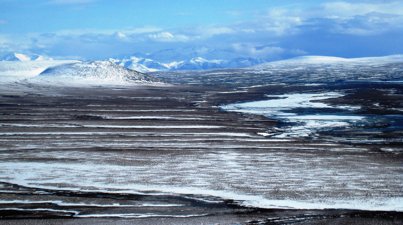
The climate impact of soot, or black carbon, is overestimated in current climate models. This is shown by CICERO researchers in a new paper, published on 25 September in Nature Communications.
The new study uses observations to improve how the atmospheric distribution of soot is calculated in a climate model, and finds a substantially reduced climate impact from soot. The findings have implications for the potential of emissions reductions of soot as a measure to mitigate global warming.
Multiple Uncertainty Factors
Soot is small particles emitted to the atmosphere by incomplete combustion, from sources such as fossil fuels and forest fires. A number of factors make the climate effects of soot uncertain, including its emissions and distribution in the atmosphere. Climate models give very different results for soot. In general, soot has a warming effect due to absorption of solar radiation. Hence, reductions of soot emissions are considered as a means to reduce global warming.
Unlike CO2, which can remain in the atmosphere for hundreds of years after emission, soot has an atmospheric lifetime of only a few days. This lifetime is uncertain, but very important for its climate effect – with a shorter lifetime, less soot reaches high into the atmosphere.
Height Distribution Important
“The results show how important it is that climate models have a realistic height distribution of soot in the atmosphere. Soot located at high altitudes has a stronger climate effect than soot closer to the ground. Most of today’s climate models have too much soot in the upper part of the atmosphere, and as a consequence, estimates of its climate effect could be overestimated.” says Øivind Hodnebrog who is first author of the study.
With a more realistic height distribution of soot, the calculation of the most important climate effect of soot, the direct absorption of sunlight, was approximately halved.
Cloud Changes
The study also concludes that it is essential to take into account the effect of soot on clouds when quantifying the total effect of soot on climate. Since soot particles absorb sunlight, and thus heat parts of the atmosphere, the formation of clouds will change. Clouds are in itself an important component of the Earth’s energy budget. This influence on clouds is called the semi-direct effect.
“In the overall assessment of the climate impact of soot, semi-direct effects must be included. Both the semi-direct effect and the direct effect of the absorption of sunlight are very dependent on the vertical profile. This work shows that the total of these effects are much less dependent on the vertical profile of soot concentrations.” says Gunnar Myhre, co-author of the article.
Bjørn H. Samset, the third CICERO researcher who contributed to the article, agrees: “Soot has been highlighted as a candidate for strong emissions reductions, to achieve a rapid limitation of anthropogenic climate change. Our results show that this potential is not as large as many believe. The influence of soot on clouds gives a cooling effect which counteracts its direct warming effect. Also, the particles remain in the atmosphere for a shorter time than previously thought, and do not reach as far from where they are emitted. In addition, we know that other components, which largely reflect sunlight and have a cooling effect on climate, usually are emitted together with soot. It is, therefore, difficult to reduce the warming from soot emissions without also reducing the emissions of cooling particles.”
Details of the Study:
Hodnebrog, Ø., Myhre, G., and Samset, B. H.: How Shorter Black Carbon Lifetime Alters its Climate Effect. Nature Communications. 5:5065 doi: 10.1038/ncomms6065 (2014).
Source: CICERO.


















